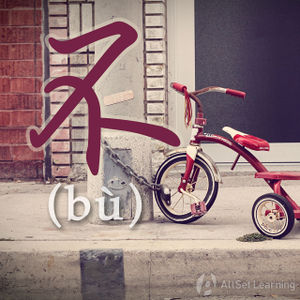Difference between revisions of "Expressing the only two possibilities"
m (Text replace - "{{Grammar Box}} " to "{{Grammar Box}} ") |
m (Text replacement - "……" to "⋯⋯") |
||
| Line 33: | Line 33: | ||
[[Category:B2 grammar points]] | [[Category:B2 grammar points]] | ||
| − | {{Basic Grammar|就是|B2| | + | {{Basic Grammar|就是|B2|不是⋯⋯,就是⋯⋯|<em>不是</em> 成功,<em>就是</em> 失败。|grammar point|ASGEXR6R}} |
{{Rel char|不是}} | {{Rel char|不是}} | ||
{{Rel char|不}} | {{Rel char|不}} | ||
Revision as of 09:09, 20 October 2016
-
Level
-
Similar to
-
Used for
-
Keywords
To describe a situation as being one of only two possibilities, you can use the structure: "不是...就是..." (búshi...jiùshì...)
Structure
不是 + A, 就是 + B
This is like saying "if it's not A, then it's B" in English. A and B can be verbs, adjectives or nouns.
Examples
- 他 整天 不 是 打游戏 就 是 睡觉。All day, if he's not playing games, he's sleeping.
- 他们 约会 不是 去 咖啡馆 就是 去 电影院。When they go on dates, if it's not to a coffee shop, then it's to the movie theater.
- 我 买 的 衣服 不是 大 就是 小,都 不 能 穿。The clothes that I bought are either too big or too small, I can't wear any of them.
- 她 穿 的 衣服 不是 LV 就是 Gucci!If the clothes that she wears aren't Louis Vuitton, then they're Gucci!
See also
- "Not… but rather…" with "er shi"
- Expressing "either ... or ..." with "yaome"
- Providing two options with double "huozhe"
Sources and further reading
Books



